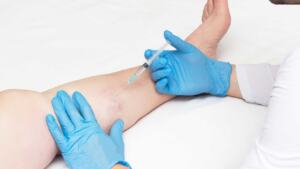Varicose veins are a common problem that affects millions of people worldwide. It is estimated that up to 23% of the population suffers from varicose veins. These unsightly, painful veins can make everyday activities a chore and often lead to more serious health problems down the road. But there is hope! With advances in medical technology, there are now many effective treatments for varicose veins. In this blog post, we’ll explore how varicose vein therapy works and when you should see a doctor about your symptoms.
What Are Varicose Veins?

Before we can discuss how to treat varicose veins, it’s important to first understand what they are. Varicose veins are enlarged, twisted veins that usually occur on the legs. They are caused by valves in the veins that become damaged or weakened, which allows blood to flow backward and pool in the vein. This pooled blood causes the vein to become enlarged and twisted. In addition to being unsightly, varicose veins can also be quite painful. Symptoms include heaviness, fatigue, burning, throbbing, and cramping in the affected leg. If left untreated, varicose veins can lead to more serious health problems such as skin ulcers and blood clots.
What is Varicose Vein Therapy?
Varicose vein therapy is a type of treatment that is used to improve the appearance of varicose veins and Spider veins. The therapy involves injecting a solution directly into the vein. This will cause the vein to collapse and eventually fade away.
How Does Varicose Vein Therapy Work?
There are many different types of varicose vein therapy available today, ranging from minimally-invasive procedures to surgery. Some of the most common therapies include sclerotherapy, endovenous laser ablation (EVLA), and ambulatory phlebectomy.
Sclerotherapy is a minimally-invasive procedure that involves injecting a solution into the affected vein. The solution irritates the lining of the vein, causing it to swell and close off. Blood is then redirected to healthy veins nearby. Sclerotherapy is usually performed as an outpatient procedure and does not require anesthesia.

EVLA is a minimally-invasive laser treatment that uses heat to collapse the affected vein. A small incision is made in the skin so that a thin laser fiber can be inserted into the vein. The laser delivers targeted pulses of energy that heat up and damage the vein walls, causing them to collapse. EVLA is usually performed as an outpatient procedure and does not require anesthesia.
An ambulatory phlebectomy is a surgical procedure used to remove large varicose veins from the legs. Small incisions are made in the skin overlying the affected vein(s). The vein(s) is then removed through these incisions using special instruments. This procedure requires local anesthesia and is usually performed as an outpatient procedure.
Wearing compression stockings: Compression stockings help to increase blood flow and reduce inflammation. They’re especially effective in treating mild cases of varicose veins.If you are dealing with any pain or discomfort due to your varicose veins, it is best to see a doctor as soon as possible. They will be able to determine if varicose vein therapy is right for you and develop a treatment plan that is best for your needs.
When Should You See a doctor?
If you are experiencing any symptoms of varicose veins, it is important to see a doctor for proper diagnosis and treatment. Early treatment can help prevent more serious health problems down the road and improve your quality of life today!
They will be able to determine if varicose vein therapy is right for you and develop a treatment plan that is best for your needs.

If you are suffering from varicose veins or other vein-related issues, varicose vein therapy may be right for you! The therapy involves injecting a solution directly into the vein in order to cause it to collapse and eventually fade away.
If you are dealing with any pain or discomfort due to your varicose veins, it is best to see a doctor as soon as possible so they can develop a treatment plan that is best for your needs. We hope that this information has been helpful and we urge you to share it with everyone you know who may be struggling with similar vein-related issues.

